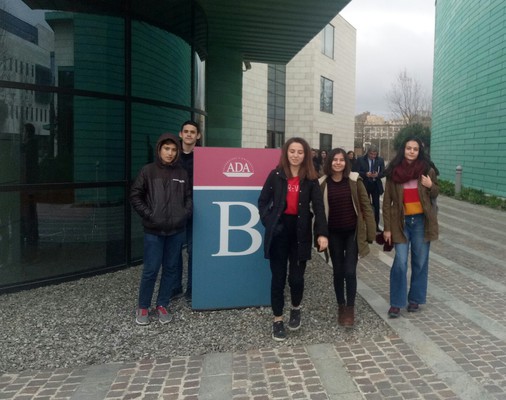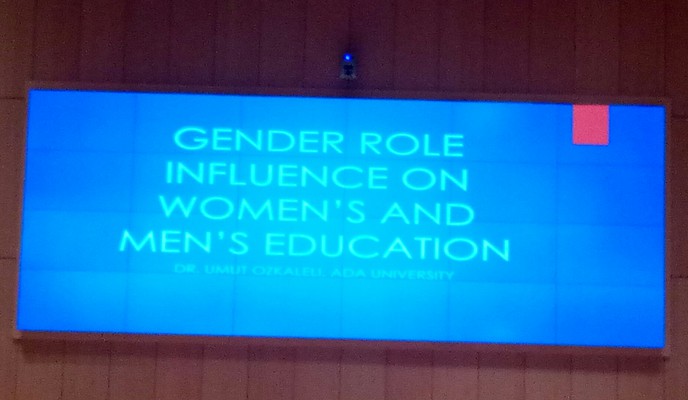Holding a Conference on Democratic Participation through the project "Gender Equality: Myth or Reality ?" ( 16 May)
Attending seminar " Gender Role influence on women's and men's education" at ADA University in Baku (7March)


The Day I Became a Woman (2000) film watched by Azerbaijani students(February)
Marzieh Meshkini is one of a number of women directors working in contemporary Iranian cinema. The film is structured in three episodes and each segment tells the story of a female at a different stage of her life. First, Hava, who is approaching her ninth birthday – traditionally the moment she must leave childhood behind and stop playing with boys. The second, Ahoo, is a young wife who is a contestant in a woman’s bicycle race, against her family’s wishes. Finally, Hoora is an old woman who goes on the ultimate shopping spree to buy all the things she has never had. Each vignette shows the disappointment and thwarted desire that women experience.
The setting of Kish, an island in the Persian Gulf, with its vast stretches of sand, provides the film with its visual impact. The imagery in the second and third episodes becomes surreal. The young woman on a bicycle, one among hundreds of women clad from head to toe in black, speeding along the coastal road in an empty countryside, with her husband’s family galloping after her on horseback, is unforgettable, as is the image of the old woman with her purchases – the entire contents of a new home, floating on a raft out to sea.
Azerbaiijani students read the articles related to Gender equality in education
Girls are still more likely than boys to never set foot in a classroom, despite the tremendous progress made over the past 20 years.
To help countries fulfill their promise to close the gender gap by 2030, the UIS disaggregates all indicators by sex to the extent possible, produces parity indices and develops new indicators to better reflect the equity and inclusion of girls and boys. For example, the UIS regularly collects data on the percentage of schools in sub-Saharan Africa with single-sex toilets or the presence of female teachers in primary and secondary schools around the world. The Institute also tracks female and male students in higher education by fields of study, especially in science, technology, engineering and mathematics.
UIS data are like a map, showing the educational pathways of girls and boys from pre-primary to tertiary education. We can clearly see and compare the extent to which girls start primary school, for example, repeat grades, drop out or make the transition to secondary education. In addition, the UIS is developing new global measures of learning outcomes to better evaluate the reading and numeracy skills of girls and boys at key points in their education.
These data empower countries and stakeholders – from advocacy groups to engaged citizens – to better target initiatives and policies, while benchmarking progress toward gender parity and equality in education.